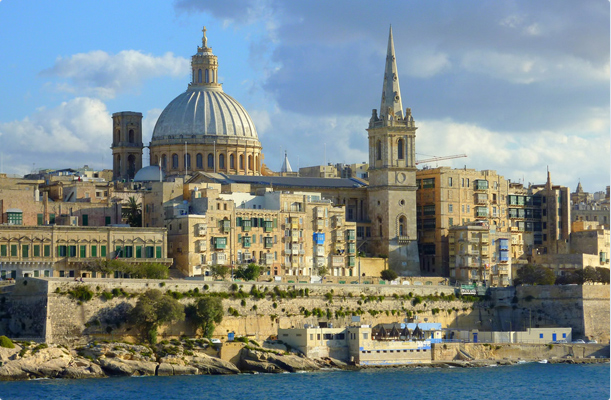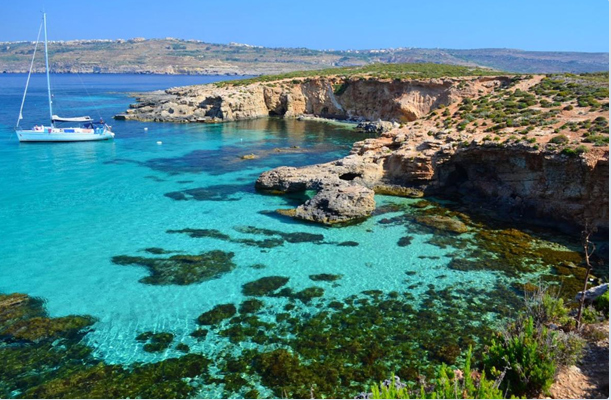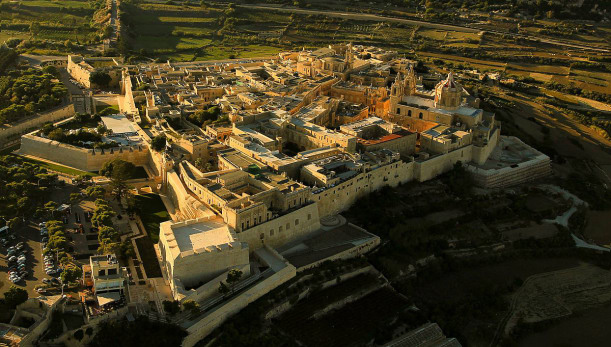As you approach the Islands' capital city of Valletta, your eyes will fix onto the Grand Harbour, with the reflection of the hearty sun bouncing off crisp breezy waves, while the majestic bastions glance into the depths below.
Grand Harbour's reputation as one of the safest natural havens in the Mediterranean is not its only charm. This magnificent port is a living display of Malta's rich heritage of archaeology, history, architecture, art and culture - all dating back to 7,000 years.
Nowadays, the Grand Harbour has become an irresistible scene for over 250 cruise ships, with almost 700,000 passengers onboard, which visit Malta every year on their Mediterranean itineraries.
The history of the Maltese Islands is intertwined with that of the Mediterranean Basin, with the major civilizations of the area having moored on Malta due to commercial interests with merchant galleys, or even in military operations with fully armed warships. From the times of the ancient Phoenicians to Malta's role as home port for the Royal Navy's Mediterranean fleet, Maltese ports have hosted a diverse range of sea craft from various countries. Now that Malta is an independent republic and a new member of the European Union, its harbours are known best to commercial ships, cruise liners, chartered and private yachts as well as nautical aficionados. The coastline's craggy inlets and bays, most of which wonderfully secluded and inaccessible from land, provide the privilege of mooring for a swim or lunching on board in privacy. Malta boasts over 750 metres of quay space dedicated exclusively to the sailing leisure market.


Climate
Malta's weather and climate are strongly influenced by the sea and have a very characteristic Mediterranean flavour, similar to that found in southern Italy. The climate is typically Mediterranean, with hot, dry summers, warm and sporadically wet autumns, and short, cool winters with adequate rainfall. Nearly three-fourths of the total annual rainfall of about 600 mm (24 inches) falls between October and March; June, July, and August are normally quite dry.
Winters are mild with only rare occurrences of cold weather brought by north and northeast winds from central Europe. In fact, daytime winter temperatures almost never fall below 10 ºC (50 ºF), while night-time winter temperatures never fall below 0ºC (32 ºF).
Summers are warm, dry and very sunny. The weather usually shows signs of warming up in April, heralding in a long spell of hot, dry weather. It rarely rains from April to August. July and August are Malta's hottest months with daytime temperatures usually above 30 ºC (86 ºF) and quite often also above 35 ºC (95 ºF).
Annual rainfall in Malta is rather low — approximately 600 mm (24 inches) and the length of the dry season in summer is longer than in southern Italy. Malta has a very sunny climate with an average of five to six hours of sunshine a day in midwinter and over twelve hours a day in mid-summer.
Places of interest
In Malta, you'll explore 7000 years of history yet live passionately in the present. You'll span the millennia with an astonishing array of things to discover. And wherever you go, the Islands' scenery and architecture provide a spectacular backdrop. The colours are striking. Honey-coloured stone against the deepest of Mediterranean blues.
The Maltese Islands have been described as one big open-air museum. What makes them unique is that so much of their past is visible today. Delve into the Islands' mysterious prehistory, retrace the footsteps of St Paul or see where the Knights of St John defended Christendom.
But Malta is no regular museum. Here life is lived to the full, so make time for some living history and action. Visit locations where Oscar-winning blockbusters were filmed or go off the beaten track into ancient villages. Marvel at the fireworks and revelry of the summertime festas and enjoy a packed calendar of events all year round.
